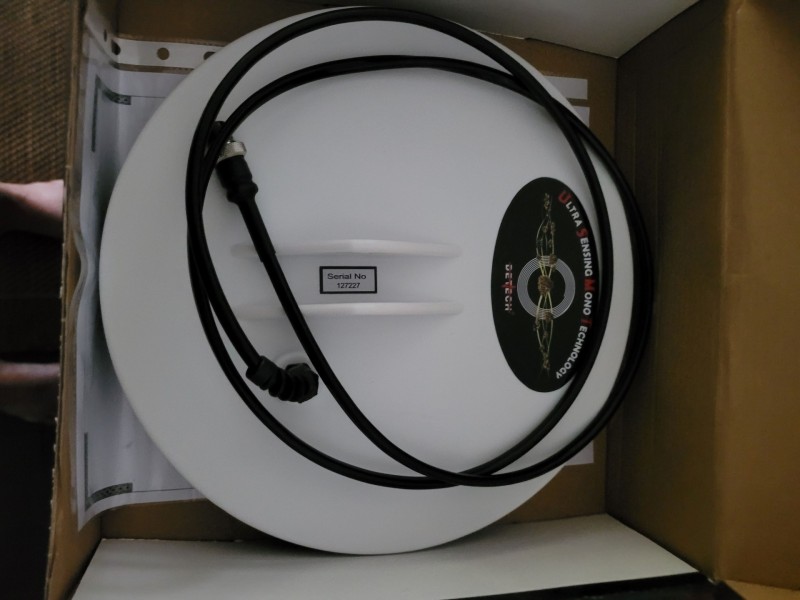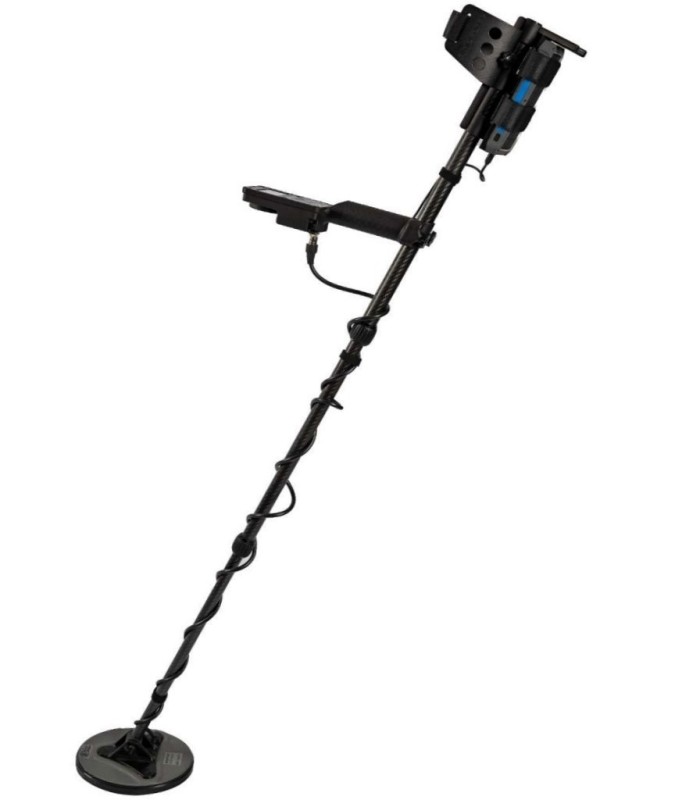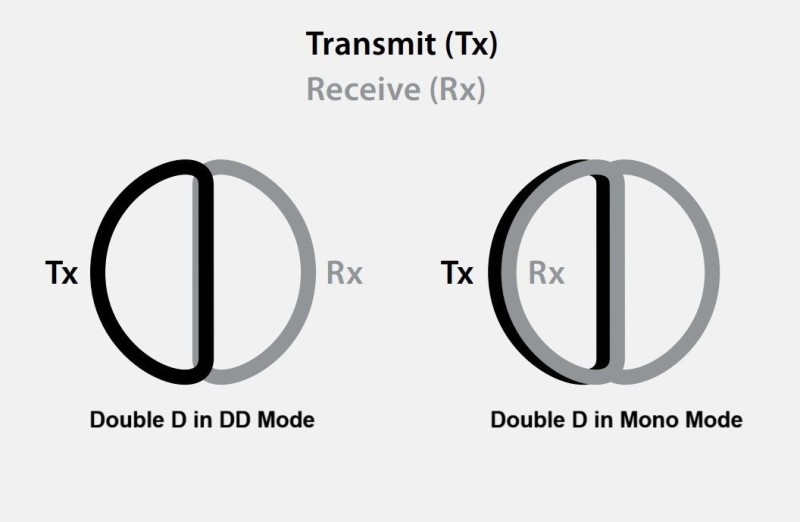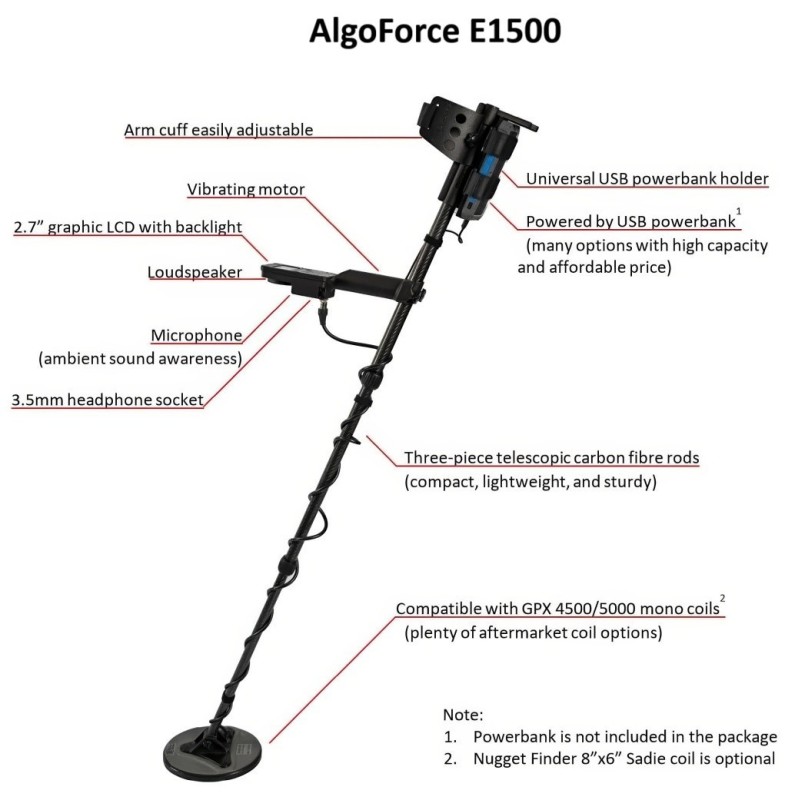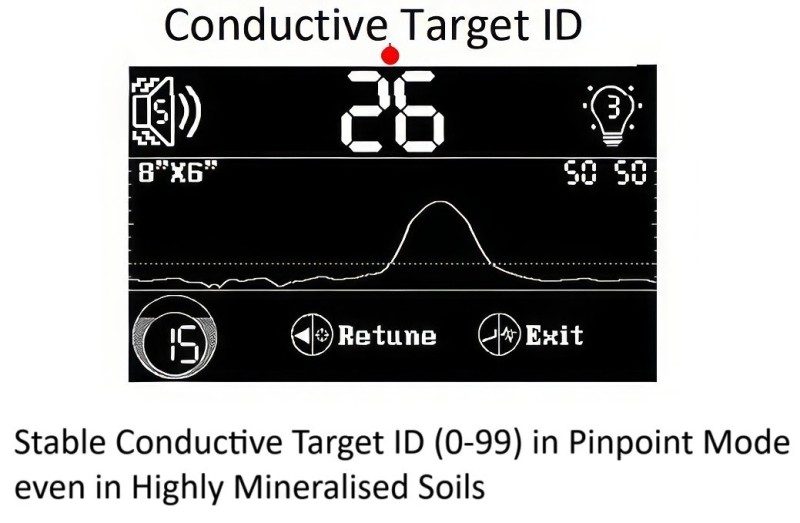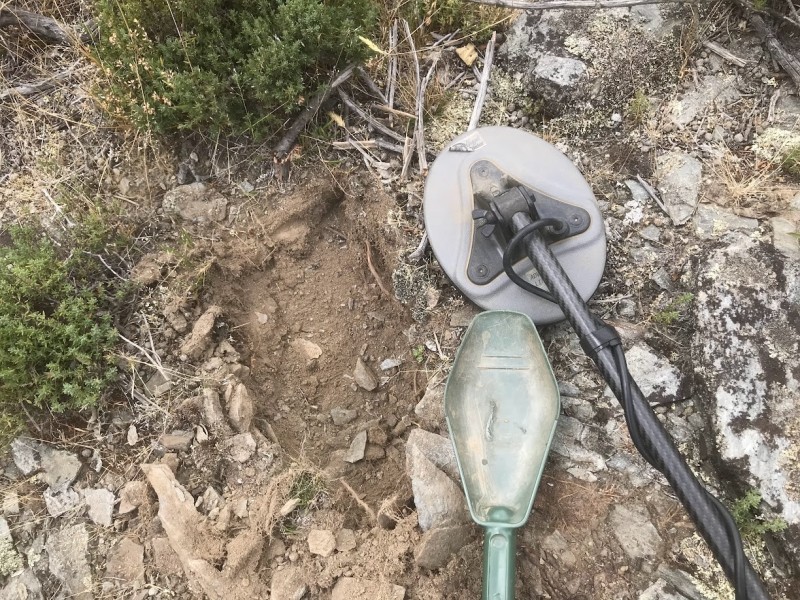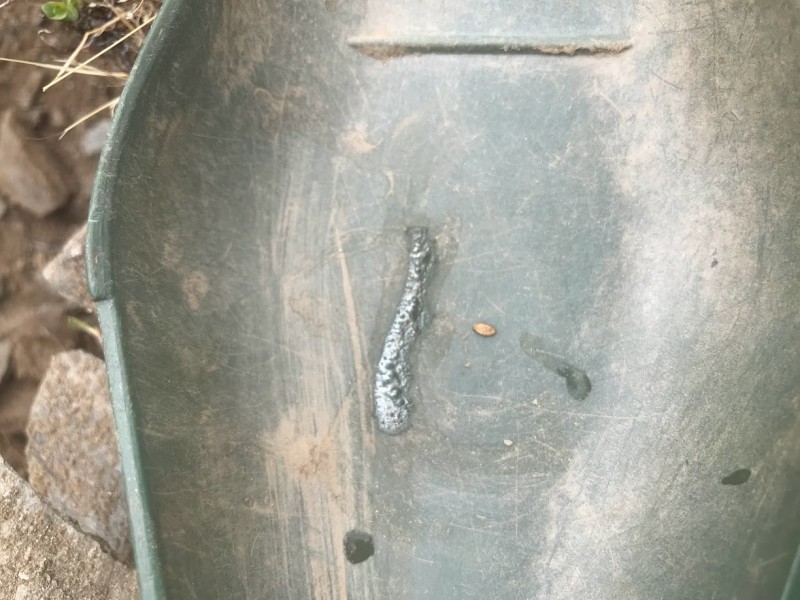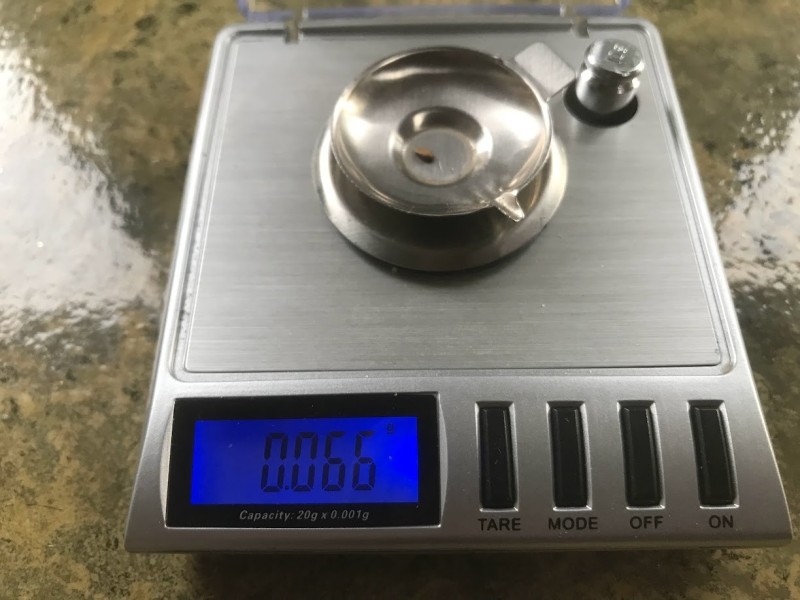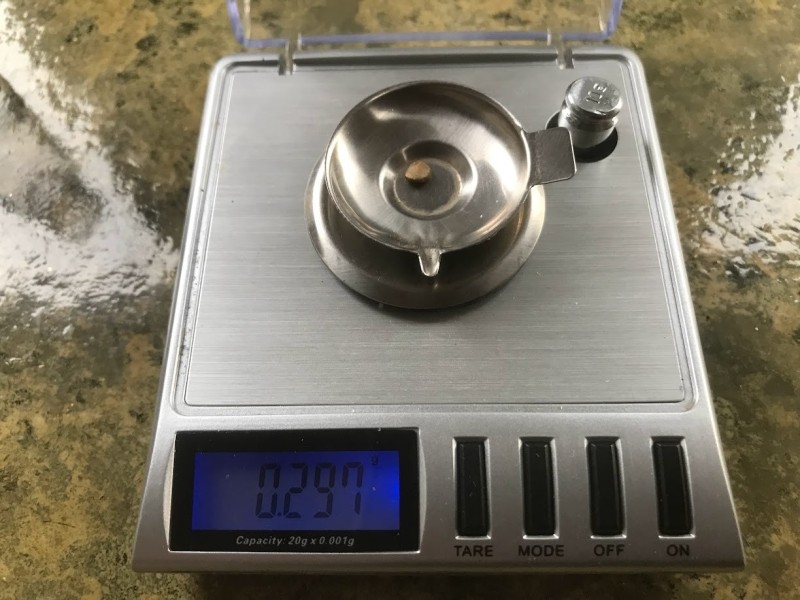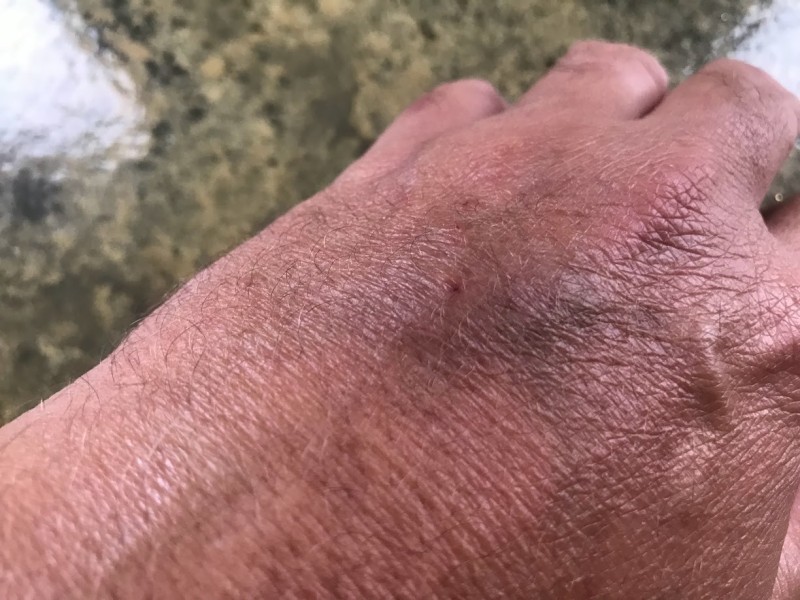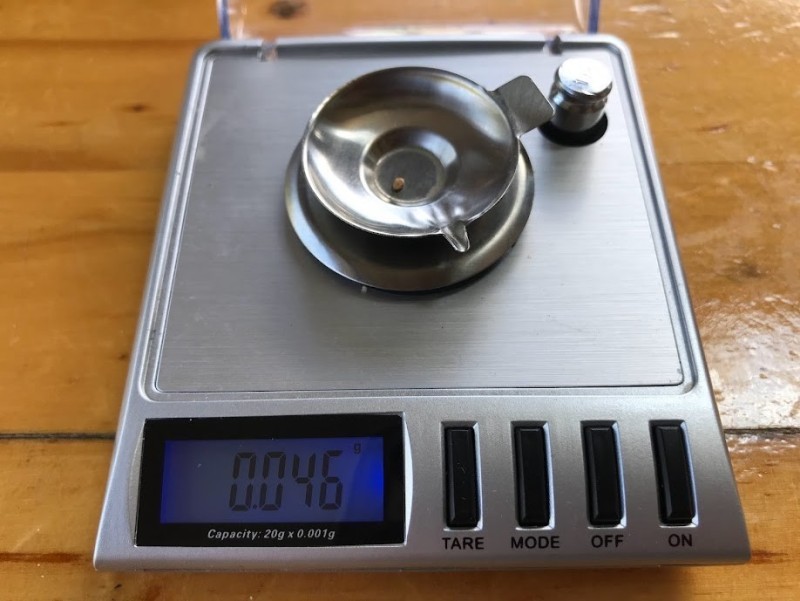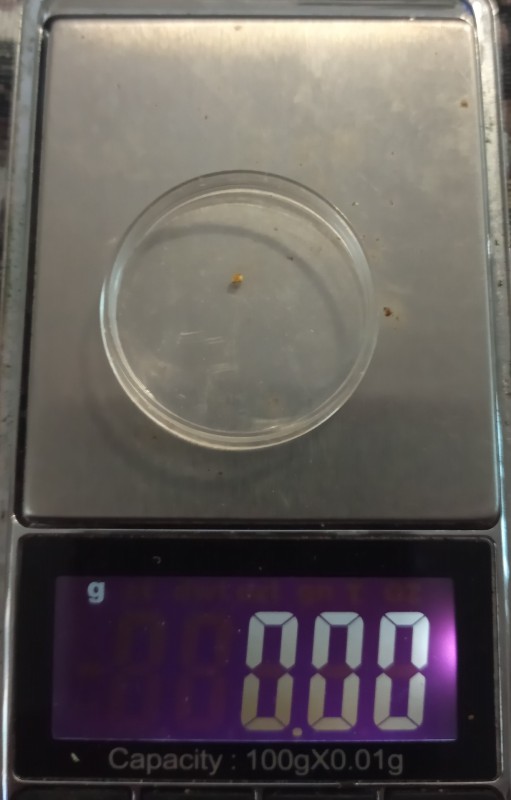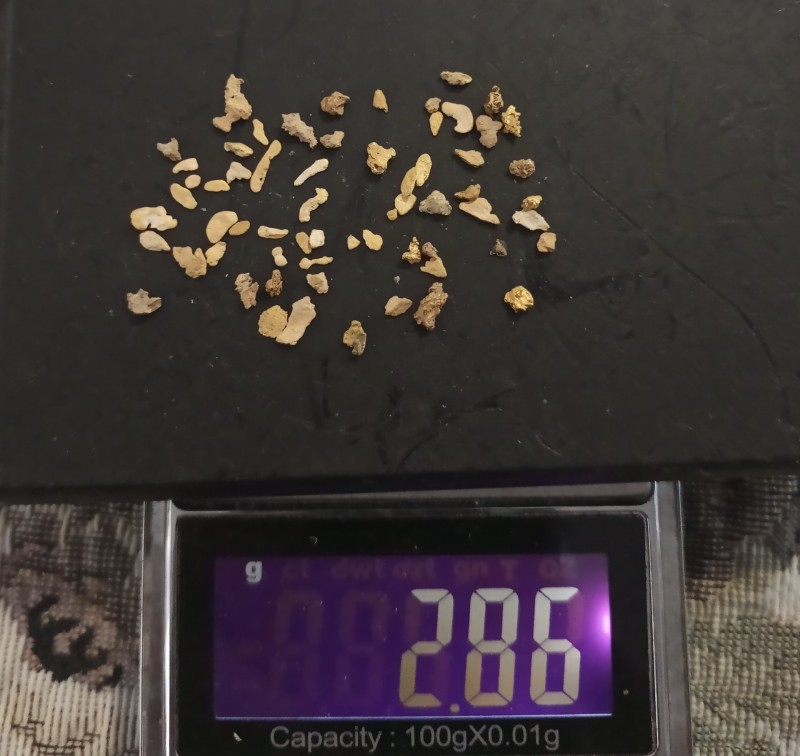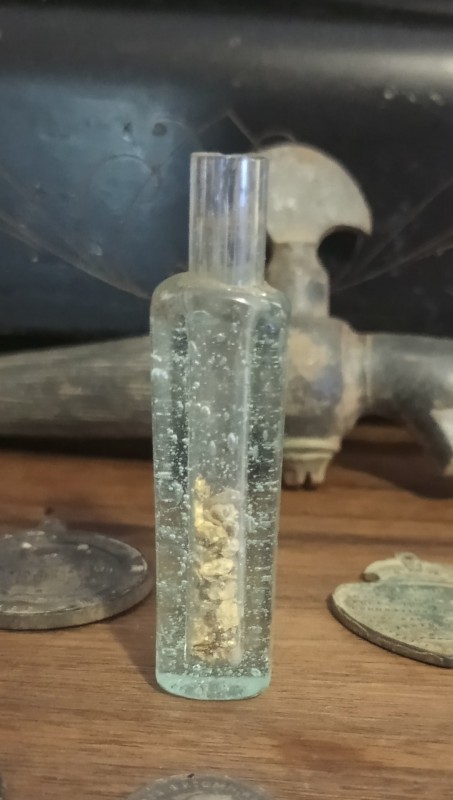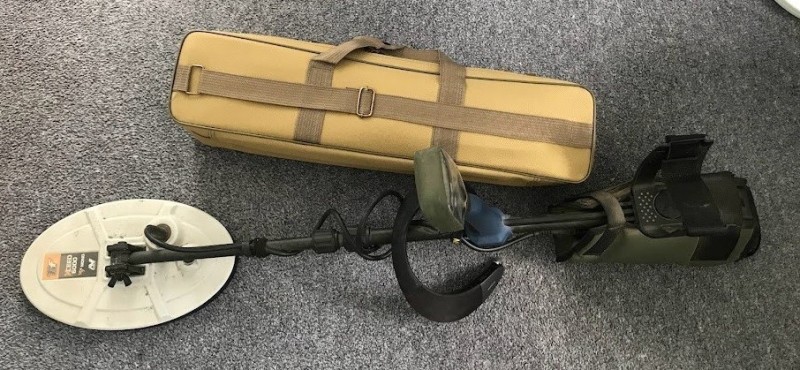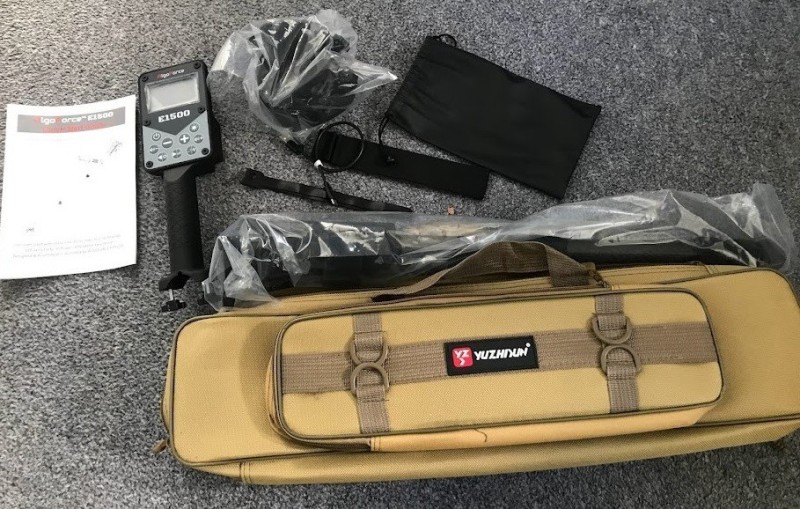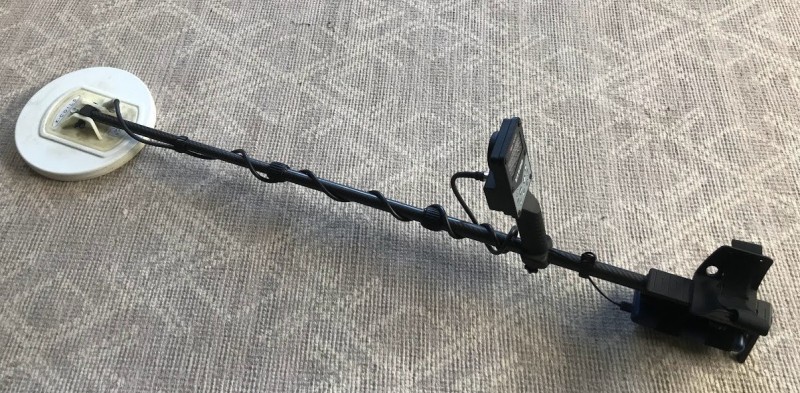Search the Community
Showing results for tags 'algoforce'.
-
Would love to see video on use of this new PI Detector
-
Hi Guys, Happy Australia Day!! Kind of cool to have another Aussie developed PI raising some eyebrows today. I should start by saying that unfortunately, FCC testing has not been done yet, so the product cannot be sold to the US at this point in time. But is available to NZ customers - so ignore my email Simon 😉 I have done a little testing on the E1500, and a few of my features/suggestions were added in, but the detector was already quite developed when I was approached for some feedback. There was a software update and then the user manual needed to be updated to include the changes. I've only had limited time on the latest version, but here's some info that will get you up to speed a little bit. 1. First of all, performance wise, this thing sits between a Gold Monster/Gold Kruzer and SDC2300. It is extremely sensitive to tiny targets, but depth won't match a 5000/6000 on large targets. I think the SDC2300 will remain superior in really bad soil conditions, but the E1500 is quite adjustable (broad sensitivity range), and obviously with different coil options, e.g. round/elliptical/semi-elliptical and flat wound/bundle wound, you can kind of dictate the performance a little bit. 2. It is for mono coils only, but works very well. Coil calibration feature is a nice touch, and optimises the electronics for any slight variations between coils. It will also tell you if you need to calibrate or not. 3. Current wise it draws about 700 ma on average, so a 10 AH power bank should run for about 13-14 hrs. Great for guys hiking into remote spots with no power. Just carry three power banks and you're good to go for days. 4. Tested on a 0.05g bit of gold and the E1500 was better than a 4500. With a Sadie coil it is super sensitive, and the tone modulation is very sharp. With an older Minelab 11" super gold search coil, depth is improved, but signal sharpness is not as good, but runs extremely stable. The 14x9" Evo seems to be a great coil for it. I think a Detech 8" mono, Minelab 8" Mono and NF 12x7" Advantage would be the pick of the coils for really hot ground, as they are bundle wound. Possibly add in the old Coiltek 11" round terracotta, and Minelab Commander and earlier Super Gold Search. But in average mineralised conditions, the Evo coils work great. 5. Hotrocks. A 6000 with 11" Mono is a little more immune to hotrocks than the E1500 with Sadie coil in Ultra Fine timing. With a slower timing, and larger coil, hot rocks are far less detectable as you'd expect. But, being a PI it is vastly superior to a VLF. 6. The shaft and hand grip feel great. 2 arm strap sizes is excellent and should cater for most people. 7. Buttons feel really nice. They have a very positive click about them. 8. The Auto ground balance works great, but is on the slower side. Slower than 4500. This is a ground balance reset only, i.e. after it has ground balanced, the ground balance is locked - just like a GP/GPX machine in Fixed. It is not continuously tracking like the SDC2300 or 6000. However, you can see when the ground balance is going out with the Ground Drift function - so it is sort of tracking in the background, but it's up to the user to reset it. 9. Interference with other detectors - I've only been out once with another prospector who was using a GPZ7000 with a 12" NF coil. We found that I needed to be about 10 metres away, that's with a Sadie on the E1500. Any closer and the GPZ would start to pick it up. 10. The Sensitivity range is great. I expect most people are going to run it in the low 20's, but in super quiet conditions, 26-30 are kind of like boost. I've got a lot more testing I'd like to do, and still playing around with headphone options, but having independent threshold and volume controls as well as adjustable tone, it should be able to adapt to pretty much any wired or wireless options. The target ID feature was demo'd to me, and appeared to be quite stable, but I haven't played around with it much at this point. So what is? It is a very well built PI machine, with a collapsible 3 pc shaft, has the benefit of being compatible with legacy 5-pin coils, a very well thought out user interface with a simple menu, and all the important functions you need. It is not waterproof, and doesn't have built in wireless, and comes as a bare bones kit, but all these things have allowed it to be offered at an attractive price point. It is not a deep machine. If you want depth on a budget, get a S/H 4500 or 5000 with a 20" mono or 25" DD. If you want to find small gold as well as specimens and reefy gold, then the AlgoForce E1500 is worth a look. Hope that gives you a bit of a better understanding of its capabilities. Yes, I plan on doing some videos so you can see how it behaves and what it sounds like.
-
New kid on the block - AlgoForce E1500 pulse induction detector just released. Selling for $2275 AUD (without coils and battery). Looks like a new company AlgoForce Pty Ltd based in Adelaide, South Australia (go the crows)- if it works as claimed could shake up the market a bit. Check out their website for specs etc. Does anyone have more information than what is on their website?
-
What’s all the excitement about a $1500 PI when my beloved GPX-6000 does just fine on tiny gold. My recently acquired (used) GPZ-7000 easily puts my back into traction bars while I swing a boat anchor and dig beyond the depths of modern man with a handheld pick, to get the rarest of gold, a 1/2 ounce nugget. Why do I say rarest of gold. Because the majority of folks in the US who put a 2nd mortgage on their house to purchase a GPZ-7000.. has yet to find that half ounce nugget. Now I’m taking pain pills to manage the beating from the ZED’s capabilities and lack of ergonomics… as well as from the old lady who seen the credit card bill. We know this new AlgoForce E1500 is not going to perform any better than what many of us here on DP already swing. Or do we??? Who wants tiny bits, specimens and reef gold anyway? Do those kinds of Au even classify as gold and register to those around us? Most folks only know what a solid gold nugget looks like, right? Show them anything else and they just role their eyes and wonder why you spent $4000, $5000, even $6500 or the crazy few (more than I realized who would), spent $8000 and up to $10K. Which begs me to wonder again and out loud this time so I can hear myself. What am I missing? Well, I’m the odd duck here in the crowd most of the time anyway. I pretty much speak my mind and offend a few when doing so. When it comes to using a metal detector, I seem to be a lone wolf in my style and desire to swing. I say that because I swing many states, and pursue a variety of treasures. I do like to specialize in gold though and since I enjoy the hunt and travel, I make the time to reach far places while trying to collect a variety of gold occurrences. I’m not the norm, for that is a sure thing. I like collecting all gold that can be found with a metal detector. And…I seem to find my share of gold, a great deal of the others miss. Is it because they are lacking knowledge or skill and possibly both. I’m not sure? I do know that my finds have increased substantially since I learned the importance of how different kinds of gold responds to detectors and their technologies. One of the things that immediately caught my attention about this new detector being released, was mentioned by our friend Nenad. On 1/25/2024 at 11:51 PM, PhaseTech said: If you want to find small gold as well as specimens and reefy gold, then the AlgoForce E1500 is worth a look. I’m licking my chops and counting the eggs (golden eggs) my roster is going to provide me. How about you.
-
These are videos from a YouTube channel I watch. Figured I'd share. He does a good job and seems very knowledgeable for sure. https://youtu.be/jX6T1ylDhjc?si=jORZHcNnlv3E70Es
-
So many threads about this detector now, it's hard to keep track of them. Does it qualify for its own section yet? Just thought it might help keep all the information easier to find.
-
A look inside the E1500 Not sure why you would without detecting...but Woody has dismantled the AlgoForce for a look see.. (again not sure why, but happy to look.) 😄 Edit: My bad, didn't realise the link was already up.
-
I sent Alex some general questions about coils and connections. First, while damage is unlikely, the detector should not be powered on without a coil attached. Also, coils should not be connected or disconnected while the detector is powered up. The E1500 is designed specifically for the use of mono coils and is wired to run one winding as both transmit and receive coil - the definition of a mono coil. A DD coil may be attached to the E1500 and it will normally operate but with only one half the coil active. One half of the DD coil will act as a mono coil, and the other half will simply remain an open circuit. The is identical to what happens with Minelab GP and GPX models when you run a DD coil in mono mode. From the GPX 5000 manual: "Using a Double D coil, running in Mono will often increase the sensitivity of the detector but may also be a little more unstable in heavily mineralised ground. Pinpointing is not centred in the middle of the coil, but to the left side, and may give a complex signal when the target is very close to the coil. It is recommended you use the left edge of the coil to pinpoint shallow targets." To clarify, when they say that the detector may be more unstable in heavily mineralized ground, they mean compered to the DD coil being run in DD mode. Running it in mono mode turns the coil into a smaller, hotter mono coil, which not only increases it's sensitivity to small gold but also ground and hot rock effects. Alex emphasized that they did no testing with DD coils but that there is no problem giving them a try. This raises interesting possibilities for people who own a DD coil and want to try it. For instance, a Minelab Commander 10" x 5" DD coil would be transformed into a roughly 10" x 3" mono coil if attached to the E1500. It would obviously still be the same physical size and weight, but also might be a very sharp small gold coil that would cover a decent swath of ground. As the DD coils get larger you would be paying a significant size and weight penalty, but on 11" and smaller coils they are light enough already it should not pose an issue. And mind you, I am not recommending people run out and get DD coils to do this. It is just that there are a lot of these coils out there sitting unused and perhaps a E1500 user will already have one, or get one dirt cheap to play with. Good article here by forum member Nenad (phasetech) on mono and DD coil differences. Algoforce E1500 Specifications & Manuals Double D (DD) coil in both DD mode and Mono mode
-
Today I took the Algoforce to a gold area, the first thing I did was put it under some powerlines in the gold area and see how well it would do, the 6000 is very ratty under and even some distance from these lines, the 7000's also a little unstable but more usable at higher sensitivity than the 6000, the reason this is important to me is I've found good gold around these exact lines, biggest bit was .7 of a gram only a few meters from where this video was filmed with the GPZ and 8" X-coil. So being able to run nicely around these lines is a big plus. So, rather than my word, here is a video This was my first target under the lines, unfortunately just a little bit of wire, but a demonstration of how it works under them with a target. I will do a post about the rest of the day also; this was just my first target as I entered the area I was going to be detecting and like every new coil or detector I wanted to test it under these power lines as these ones run straight through a gold area. I'm sure if you went back through some previous posts, you'll see the 6000 here, and the 7000. Again, I haven't watched these videos back yet I only just got home, I have no idea if its windy, or if there are any other disturbances, I like to do raw video, not editing out bits and pieces. I like people to see exactly what I see. By the way I found gold, so hopefully I'm the first E1500 paying customer to find gold with it!! that'd be cool.
-
We have a new player on the field in the form of AlgoForce and their new E1500 detector. One thing that is not getting as much attention as I would expect from a PI - full range target conductivity id. From the owners manual: "For experienced PI users accustomed to estimating nugget size from audio cues, the AlgoForce E1500 can also help to estimate size or conductivity through its stable conductive target ID (0-99), even in highly mineralized soils. High single frequency VLF detectors typically struggle with signals on wet ocean sand, where PI detectors are far more capable of detecting through the salt mineralization. Capitalizing on its UltraFine pulse induction technology and stable conductive target ID (0-99), the AlgoForce E1500 excels on the beach, proving to be a versatile tool for searching fine jewelry, coins, rings, and other treasures." (Emphasis added) The discrimination feature kicks in when using the pinpoint mode. Again, from the manual: VIII. Pinpoint detected target (if needed) Enter the Pinpoint UI by pressing the Left/Pinpoint button in the Main Detection UI. In the Pinpoint UI, adjust Sensitivity with the Minus or Plus button. To retune the detection threshold due to ground variation or temperature drift, press the Left/Pinpoint button as needed. Perform Auto GB if needed by holding the Right/Auto GB button. Return to the Main Detection UI by pressing the Return/Auto FS button. Pinpoint is a non-motion mode where the coil doesn't have to move to indicate a target. The detection signal gets stronger as the coil approaches the target, causing the audio (if audio output is on) or vibration (if vibration mode is on) to intensify. The Conductive Target ID (0-99) displayed in the Pinpoint UI remains stable even in highly mineralized soils. A higher number indicates a larger or more conductive target. To obtain an accurate target ID, it is recommended to follow these steps: Move the coil away from but close to the target. Ensure the coil is resting on the ground surface and press the Left/Pinpoint button to retune. After that, slide the coil on the ground surface until the target is positioned just below the center of the coil. The target ID is also useful for assessing the target's shape. If the target ID fluctuates significantly when the coil is moved slightly off but still above the target, it likely indicates an irregularly shaped target, such as a bottle cap or a nail with a large head. Target conductivity is not the same as VLF discrimination in that both ferrous and non-ferrous are conductive. Stuff that is small or low conductive reads low numbers and stuff that is large or high conductive reads high numbers. Ferrous can read anywhere depending on various factors, so the usefulness of the system largely depends on the nature and mix of targets you are working with. Nowhere does the AlgoForce manual refer to ferrous versus non-ferrous discrimination. It specifically refers to the Conductive Target ID - in other words, a measurement of how conductive the target is whether ferrous or non-ferrous. Most GBPI users have savvied to the fact that the high and low tones give a rough indication of target size. A hi or hi-lo tone usually means small or low conductive targets and a low or lo-hi tone usually means large or high conductive targets. You get ferrous either way, just small ferrous on one side and large ferrous on the other. However, in certain gold locations concentrating on hi or hi-lo tones only can be remarkably effective at cherry picking gold nuggets out of a nail pit. Most gold I find almost always gives a hi-lo tone. Minelab employs a method where targets blank if ferrous, and Garrett the target grunts if ferrous. The Garrett method is preset, the Minelab method can employ a variable control depending on the model. What makes the AlgoForce different is instead of the "this or that", "yes or no" answer of two categories you get a full range indication, which with experience should lead to more nuance in what can be dug and what can be ignored. PI discrimination is not the same as VLF discrimination. There are different aspects to it that require a savvy operator. There are a lot of half truths and incorrect statements tossed around by people who don't know much on the subject. One of the most common claims I hear is that PI disc only works at shallow depths, and that the things you have to do to implement it give up the extra depth that is the reason for using a PI in the first place. This is based on some versions of PI discrimination and so can be true, but also reflects that the person making such statements is not well versed in all aspects of the subject. You can indeed discriminate to full depth with a PI, and in fact that is the only way I have been doing it for almost 20 years now. For more details on how pulse discrimination works see my long analysis at the thread below. No, it’s not VLF discrimination, but you’d be amazed what good PI operators can do with the capability they do have. We have a winner in the Under 4 Pound, Under $2000 GBPI Challenge! AlgoForce E1500 Specifications and User Manuals Visit the new AlgoForce Metal Detector Forum
-
Today I took the Algoforce for a gold hunt, it wasn't the location I was wanting to go to as the one I wanted to go to I had more confidence of finding something, its temperature was going to be too hot, then I saw a closer spot right near JW's house was cooler when I checked its forecast, I couldn't resist and decided to go, although I had little hope of finding anything, being so close to home for JW and his uncanny ability to find all available gold he doesn't leave much behind. The first thing I did seeing this area has powerlines right through it was to test the Algoforce under them, results can be seen here, I must say though, very impressed! I had a hunch it would be good, it's one of the few detectors and only PI that I have that I can use inside my house for testing. I next found a 22 shell, pretty typical here and generally screamer targets, sometimes I'm lazy and reject them, risky move but I can get lazy in the heat. Seeing I was digging it all, the general rule for a new detector I dug it up, pretty neat video, a 22 shell comes up with a Target ID of 22 😛 I later tested the same 22 shell on the Sadie, and was pleased to see it came up 22 on an entirely different coil, a 10" Spiral vs a 8x6" bundle wound. You've probably heard me whinge about the green hot rocks in the past, so I wanted to see how it goes on them, the 6000 can't balance them out in normal but does to a degree in difficult, not completely gone but better than normal, The Algoforce on the other hand, bang.... gone! bye bye Green hot rock! To top it off once balanced out I put a little shotgun pellet I'd found on top of it, a giant big green hot rock and it still was able to detect the pellet as if the rock didn't exist. I notified JW I was there seeing he lives very close nearby and he popped down for a detect and to catch up, he had his 6000 and 10x5" Coiltek with him, a good combination for the area. He was also kind enough to bring along an assortment of GPX coils that I don't have to try including the Sadie (mine still hasn't arrived from the NZ Dealer) and a 6" Coiltek round mono. Unfortunately, I didn't get a chance to test out the mono which I'll explain later but quickly swapped over from my 10" X-coil to the Sadie to try it out, seeing it was the manufacturer tested coil on the detector I wanted to see how it goes. The Sadie is very light, quite nice to swing such a little coil in the rougher areas, knowing it has hot edges is a nice attribute too. In my first video up the top with the 22 shell I explain about the coil cable and how the Algoforce detects it when you pick up and put down the detector with the 10" fitted, I even accidentally left pinpoint mode on when sitting it down and the detector screamed, it was sitting there pinpointing the coil cable and had an ID for it 🙂 Seeing the pinpoint mode doesn't need motion it just screamed on the cable. I later discovered when switching to the Sadie the coil cable doesn't get detected near as much, those with a Sadie probably will barely notice when lifting up and putting down their detector, whereas with the 10" spiral it screams. Pinpoint mode will obviously behave the same with the non-motion. The 10" spiral is much more sensitive than the Sadie, but I already knew this, if someone's after maximum sensitivity to small targets size doesn't matter as much as windings do, the Coiltek 9", 10" X-coil or 12x8" EVO will likely be the most sensitive, never used the 12x8" EVO only owning the 14x9" Evo but I'd likely give it the tiny target sensitivity over the Sadie too. That's not saying the Sadies a bad coil, its edge sensitivity will give it great benefit over the far less sensitive edges of the spiral coils so if golds up against rocks it will win, it's also good for poking and prodding with the sensitive edges and it may handle some bad ground better too. I found a little bit of gold under a rock not long after putting the Sadie on, It wasn't detected from above the rock, I was just lucky enough to flip a rock that had a little nugget (flake) under it. JW had also recovered a little nugget, one he had detected some time ago in the schist bedrock with the GPZ and I think it was the 15" CC, he ended up not being able to find it, thought it was lost and moved on, the coil was probably just too big and awkward for his little dug hole in the bedrock or something to get close enough to it, but it was gone, today he managed to get it with the 10x5" Coiltek on the 6000 smashing out more rock. It was smaller than the one I'd just found, quite a bit smaller. Time went by and nothing for either of us, so I explored further and climbed down a bit of a ledge and found a target, I was trying to get it out and it sank down into a hole in the rock of the ledge to the next layer below, I was trying to get it out learning right over hoping I don't fall into the prickly briar rose bushes below, I'd be in big trouble then, and I kept poking the Sadie in under the layer and it kept sounding off so I thought I was hitting the target, so I'd slowly slide out some soil and it would keep sounding off the same, it turned out it wasn't sounding off on the nugget, it was sounding off as the coil cable was getting crushed down and touching the coil. It is vital with the Algoforce to have a nice secure coil cable that can't go near the coil, it just shows how sensitive it is, the GPZ with small coils like the 8" and 10" is the same especially lifting up and putting down the detector so I'm a bit used to it. I gave up that method and risked climbing down to the bottom of the little ditch in among the prickles, sadly 3 of them stabbed into my hand, I plucked them out one by one but by the 3rd one I had a problem, it had stuck straight into a vein, when I pulled out the rose thorn a big squirt of blood shot out like a jet, then it swelled up rapidly like a balloon under the skin, it got quite big, about half a golf ball, then in a seconds the swelling went down a fair bit to a blackish lump, and its stayed that way. I felt quite sick at this point, really dizzy, so I just used the Sadie from down there where I could get into the gap between the rocks better, retrieved the target and climbed back up the ledge leaving my detector and pick on the ledge to collect from half way down from the top, I climbed up with my scoop in hand with the target in it. Once at the top I was so dizzy I just sat down for about 10 minutes with the scoop sitting next to me hoping it wasn't some junk. Once I recovered enough, I climbed down and retrieved my detector and pick and climbed back up to recover the target from the scoop. I was so pleased it was a piece of gold after all of that. Here is the video of it all, I quite big bit for what's left in this area, that's for sure. I felt really weird sort of dizzy sort of drunk but it could be a combination of heat exhaustion along with the weird injury so I walked back to JW and told him what happened and showed my nugget, he suggested I had a sit down which I had planned to do, I sat another 20 or so minutes and just felt worse so I call over to him that I'm going to head home cutting my day short, I stopped for a snack on some wild black berries on my walk to my car as I hadn't yet had lunch. I felt horrible the entire drive home, almost vomited half way home going around the lake which is a very bendy road for about 30 minutes along the side of the lake. I'm coming right now, no longer dizzy that I've cooled down and had a long cold shower and plenty to drink, I had run out of drink very early in the day too so perhaps I was dehydrated. Next time more drink bottles coming than just the one little one. So here is my hand now A bit black and swollen still. I really like the Algoforce, it's an incredible detector for the price, a real game changer for people that don't need the absolute best of the best yet still want a very high-performance PI machine with cool features and at a very cheap price. The more I use it the more I like it. I really hope I'm the first paying customer that's found gold with the detector, that'd be pretty cool.
-
One of the things that made me just have to have the Algoforce was the promise of Target ID's on it, I didn't think they'd be near as good as they in fact are. It's taken me by surprise and I think people will find it useful in many ways. The one thing so far that's standing out is shotgun pellets, every pellet I've tried and I noticed this in the gold field the other day the pellets ID at 00, and the gold I found both bit were in the numbers, not 00. So I've now tried a few more pellets, and a lot more gold and almost all of the gold gives a numbered ID and every pellet is giving me a 00, I think the sphere shape of the pellets is causing them to ID really low on 00. There is likely some pellets that will ID in the numbers and there is certainly some gold that ID's at 00, for example the smallest piece of my test bits was coming up as a 00, the one pictured below, it's smaller than the pellets. I thought I'd film a little demonstration video of this, along with showing some coin and junk target ID's on it to give people an idea of how it all works and the ID's it is showing. Again, my usual raw video style, fumbles, mumbles, mistakes and all. 🙂 Then I went out into my yard where I have a couple of NZ $1 or $2 coins buried, I think now using the Algoforce on them and its wonderful Target ID's they must be $2 coins, the Manticore is a bit wild on them and I could have messed around, tweaked it and done whatever else to try get it a bit better but the point of the demonstration isn't the Manticore, so I just did a ground balance, and noise cancel and had the sensitivity low enough the EMI wasn't causing too much havoc. The Nox 800 is more stable and detects these coins with a more accurate target ID of 21/22 on the easier one, and a bit bouncy on the deeper one but still a repeatable 21/22, the reason I'm now more confident they're $2 coins is the Algoforce seems to get a different ID for the two coins being different sizes, whereas on the Nox they both come in at 21/22 bouncing between the two, even in an air test. It's just been so many years since I put them in the ground I've forgotten, and the fact the Nox Id's them both the same I didn't overly care when burying them which of the two they were. So here is a little demonstration video of the Manticore and the Algoforce on these two buried coins. I had a fumble in the middle of the video leaving the Algoforce in pinpoint mode and for some reason my brain fart had me pressing re-tune to quiet the pinpoint mode down and tune out the target rather than exiting out of pinpoint mode and checking the target, I realize and fix it up but it wastes a few seconds of the video, either way, I wasn't going to bother filming it again or editing it to get rid of that so you'll have to deal with it 🙂 I hope this helps understand its target ID's better for those interested. A change they could make in a new firmware update I think is a separate volume control for the pinpoint mode, that'd be a nice thing to have so I will suggest that to them. (I contacted Algoforce about having an Independant pinpoint volume and it is coming in a new firmware update very soon)
-
Hi. No rubbishing attempt here. Im serious. Been detecting since blahh blahh blahhh, found bigger than blahh, blahh, blahhh. Im the blahh...ahh forget it. Im none of that. I'm happy anything. Was gonna do this as a reply in another thread. So. I can right now find this stuff easy with a Highly strung VLF. Not every day. But is expected. The new Algo. How does it do on this stuff. Algo said VLF sens in a PI. Hope i got that right. Because I got countless places that the stuff in the following pics is there. Some found with a GPX5000, gone, and the rest with VLF. Doesn't weigh. Too small. Count, im tired trying, 60 All in the tiny opium bottle. May take full 7g!? I really want to hear from users, putting it up against the claim of VLF sens in a PI. On various forums its vs 7000, 6000, 5000, 4500, ........ People are doing that but I have seen zero vs the claim VLF sens in a PI. There are a squilion VLF users out there like me now. Show us and im in, in a blink.
-
My Algoforce arrived a couple of hours ago, I had a quick refresher flick through the Quick start guide that came in the box and had a play around, to my surprise I could use it inside my house on default sensitivity and it was quite stable, I was able to test some coins on it for target ID and mess around learning the menu navigation. It's a puzzle at first as you need to remember the irons purposes, most icons are a giveaway as to what they do and the screen even tells you which ones to press on certain screens. So far first impressions on usability is for a detector with settings like this, it's very easy to use. I was able to configure my 10" X-coil on it in no time without the need for the instructions. It quickly calibrates to coils, a couple of seconds if that and you can store their size in there so you can easily go back to them, it comes pre-configured with a few common coils. It comes with this cool bag to lug it around in, I shouldn't say lug it around as it weighs nothing, it's super light and makes the 6000 feel heavy. The 6000 in the picture is shrunken down a bit for storage but was put there for a bit of a size reference. This is the contents of the package. All very professionally made, the look and feel is a long way different to the more homemade feel of the QED, a similar priced PI machine. And it all assembled with the 10" X-coil on it and configured. It's really easy to assemble, It takes a bit of getting used to the coil connector, it's different that's for sure, I'm sure if someone didn't like it they could put a GPX 5000 one into the shaft as I'm pretty sure you can buy the part but it worked fine and once, I knew what I was doing it did the trick, it doesn't use coil rubbers, a different design entirely but it does work and is probably perfectly fine, I'm just not used to it and with X-coils have very solid ears they don't flex out to fit it between them, at first I didn't think it fit the X-coils but I worked out if you slide them in from the back they fit, trying to get them in from the top of the ears is impossible. Maybe X-coils need to adjust their coils for an extra millimetre or two of width on the ears to make it an easier fit. I'll discuss this with them as they are resuming production of their GPX coils due to this detector hitting the market. Now, I filmed some video, it is very raw, my usual style of no editing and what you see is what you get, in the video you're seeing what I saw the first time doing it, I'd not even tested the nuggets I went over prior to filming. I'd just checked a couple to ensure it even worked 🙂 I'd used the detector for about 10 minutes at home in total before filming the video so be gentle, I'm just learning it. I will say for a fact it's more sensitive to small gold than the GPX 5000, some of these nuggets I used in the video the 5000 can't hit on at all. It's also more sensitive than the QED by a significant margin. I tested on a $1 coin, and had the target ID then I went into my yard where a couple of $1 coins are buried, and it was able to ID them very well, with a stable ID, I was quite surprised by this and I have to go back out with a VLF and double check it all and get some video. This is all very early days, but I'm certainly happy with it, it handles EMI so well for a PI , better than anything I've used before, and I think even for someone that just has a GPX 4500/5000 it would be a big compliment to it being more sensitive and picking up the gold the 5000 misses due to it being porous or just generally weak on, and for anyone not wanting to pay the crazy Minelab pricing for a 6000 or 7000 it's a bargain. On lead shotgun pellets it's similar to the 6000, neither will hit the #9 pellet but as the sizes increase both are the same with the pellets they will detect. I've not checked depths or anything yet just ability to hit them comes in at the same size pellet. I have so much to experiment on it yet, but happy with it for sure. The videos currently still processing by Youtube to HD but the SD version looks available now. I haven't even watched the video myself, this is raw as it gets.
-
Well looks like Simon beat me by a day, but I've got a video up showing the user interface in detail and cover most of the settings. AlgoForce E1500 Specifications & Settings
-
And yet another video pops!

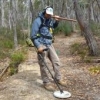
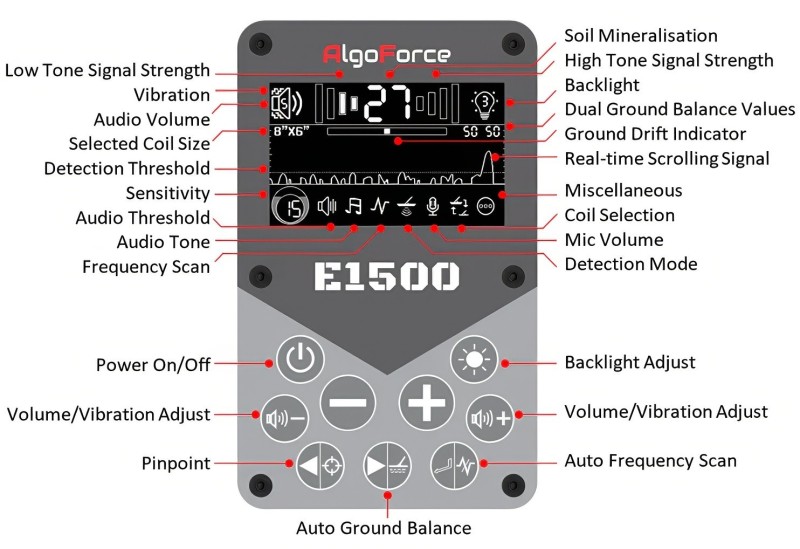
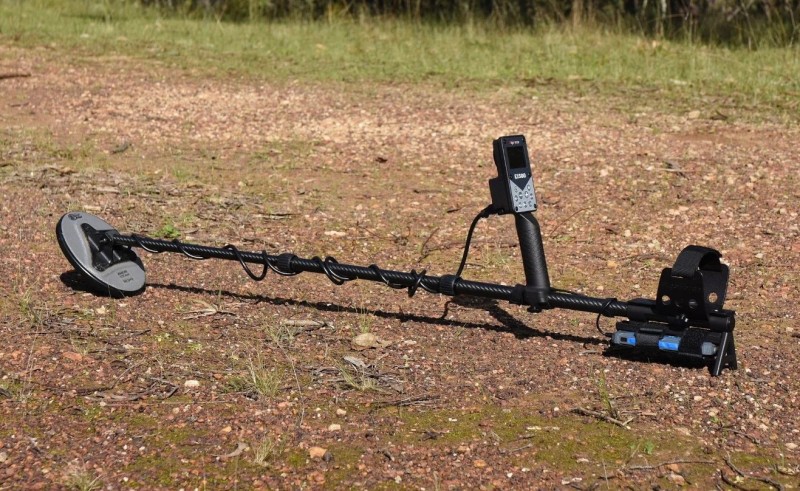
.thumb.jpg.4bb4c6c4da978cb5eac96e6390d8f36c.jpg)

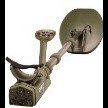
.thumb.png.a05cd7044564261eda31cd4ac4ffbc27.png)

